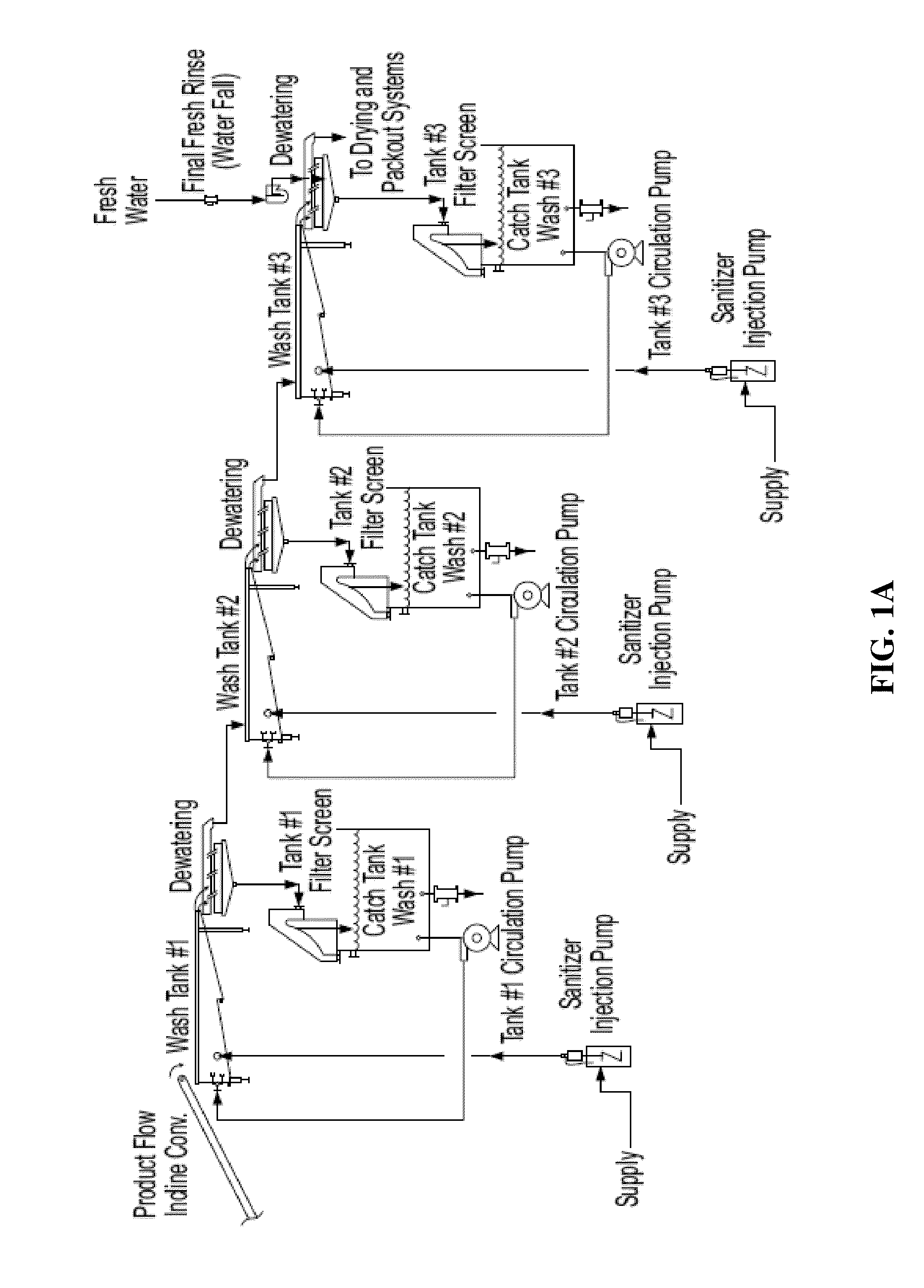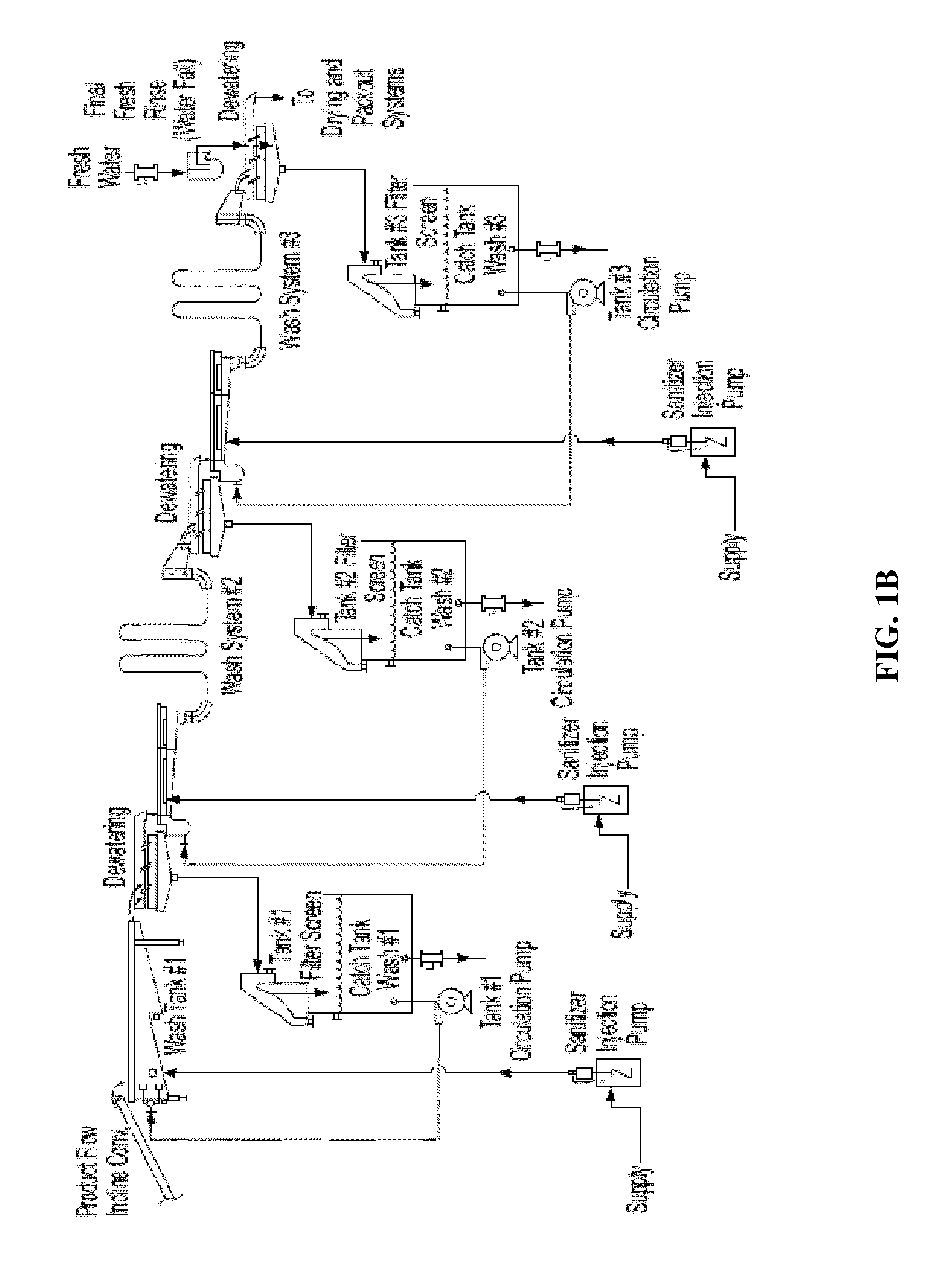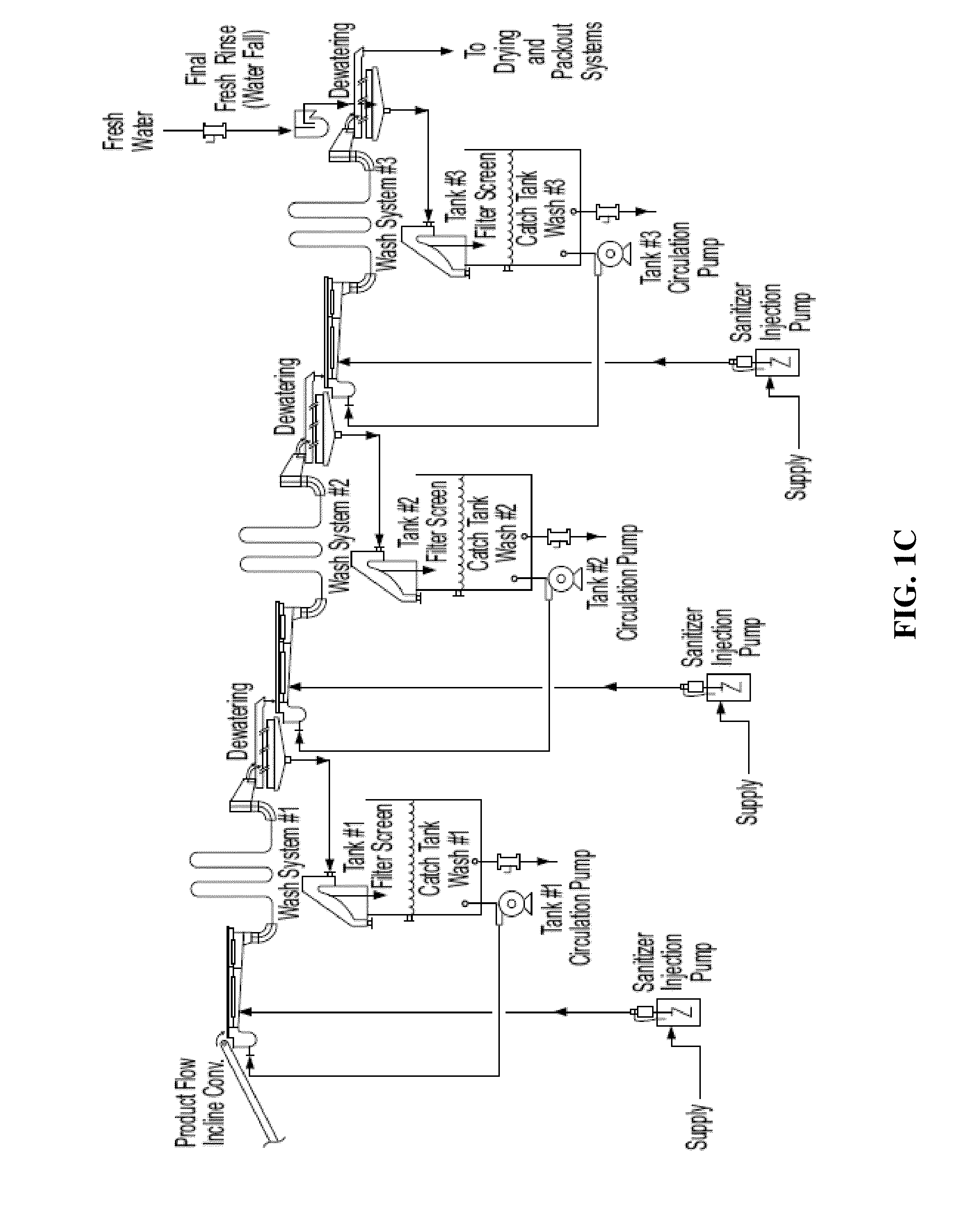Method for sanitizing fresh produce
- Summary
- Abstract
- Description
- Claims
- Application Information
AI Technical Summary
Benefits of technology
Problems solved by technology
Method used
Image
Examples
example 1
Sanitizing Produce by Treating with a Chlorine Dioxide Solution, a Chlorine Solution, and an Peroxyacetic Acid Solution
[0150]The following Example demonstrates that a triple wash treatment utilizing a chlorine dioxide (ClO2) solution, a chlorine solution (Cl2), and a peroxyacetic acid solution (PAA) is successful in sanitizing leafy vegetables, such as lettuces and spinach. The triple wash treatment described below includes the use of the sanitizers chlorine dioxide (ClO2), chlorine solution (Cl2), and peroxyacetic acid (PAA). Without wishing to be bound by theory, it is believed that use of the chlorine dioxide solution dissolves or otherwise removes bacterial biofilms present on leafy vegetables that protect the bacteria from the effects of sanitizers. Once the biofilm is removed, chlorine dioxide and chlorine solutions sanitize the leafy vegetable by eliminating the bacteria. The use of the PAA solution not only further sanitizes the leafy vegetables, but it is also believed that...
example 2
Efficacy of Triple Wash Treatment for Sanitizing Leafy Greens Inoculated with Pathogenic Bacteria
Introduction
[0237]The following Example demonstrates the efficacy of a triple wash treatment utilizing a chlorine dioxide (ClO2) solution, a chlorine solution (Cl2), and a peroxyacetic acid solution (PAA) in reducing microbial load in leafy vegetables inoculated with E. coli, Salmonella and Listeria, common pathogenic contaminants.
Materials and Methods
[0238]Log Reduction Analysis of Background Bacteria
[0239]Commodity lettuce (FIG. 9A), such as Romaine lettuce (i.e., product that has not been subjected to a sanitization treatment and / or bagged under modified atmospheric packaging), was used for each trial, and stored at 4° C. until analyzed.
[0240]Any leaves that had visible damage were discarded. For the lettuce (FIG. 9A), the mid-rib of the leaf was removed (FIG. 9B). This was done to ensure the same leaf tissue was used to reduce the variability between samples. The leaves were then cut...
example 3
Efficacy of Triple Wash Treatment for Sanitizing Leafy Greens Under Commercial Processing Conditions
Introduction
[0285]The following Example demonstrates the efficacy of a triple wash treatment utilizing a chlorine dioxide (ClO2) solution, a chlorine solution (Cl2), and a peroxyacetic acid solution (PAA) in sanitizing (i.e., reducing microbial load) in lettuce using a processing wash line under commercial processing plant conditions.
Materials and Methods
[0286]Processing Apparatus
[0287]Chopped Romaine lettuce was processed and treated with the triple wash treatment using a similar apparatus as to that shown in FIG. 10.
[0288]The apparatus has the ability to completely submerge the chopped lettuce for overall and uniform treatment exposure, and to convey the lettuce with precise time of treatment. Residence time in the apparatus was controlled by controlling the speed of the water pump motor that is responsible for conveying the water and submerged product through the device. The appara...
PUM
 Login to View More
Login to View More Abstract
Description
Claims
Application Information
 Login to View More
Login to View More - R&D
- Intellectual Property
- Life Sciences
- Materials
- Tech Scout
- Unparalleled Data Quality
- Higher Quality Content
- 60% Fewer Hallucinations
Browse by: Latest US Patents, China's latest patents, Technical Efficacy Thesaurus, Application Domain, Technology Topic, Popular Technical Reports.
© 2025 PatSnap. All rights reserved.Legal|Privacy policy|Modern Slavery Act Transparency Statement|Sitemap|About US| Contact US: help@patsnap.com



